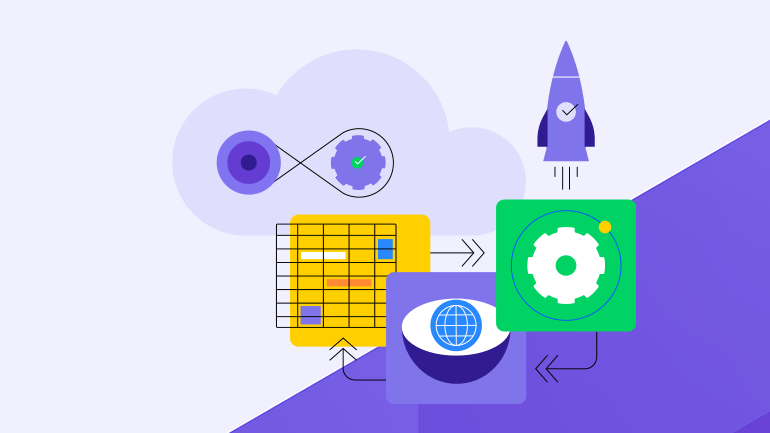How to Build a Cohesive Customer Journey Across Channels

A cohesive customer journey involves integrated data and consistent messaging. By mapping out each touchpoint, businesses can identify gaps and opportunities to enhance the experience. Leveraging the right technology is crucial to synchronize efforts across all platforms.
Let’s say you are shopping for a new laptop. You start by browsing reviews on your phone during your morning commute. Later, you visit the store’s website on your work computer to compare models. That evening, you stop by their physical store to try out a few options. Finally, you make the purchase through their mobile app because you found a special in-app discount.
Sound familiar? This is how most of us shop today. We bounce between channels, devices and touchpoints, expecting everything to work together smoothly. But for businesses, creating this seamless experience is anything but simple.
Breaking Down Channel Barriers
Let’s be honest—most companies still handle their different marketing channels like separate islands. The social media team does their thing, the email team has their campaigns and the in-store experience exists in its own world. This disconnect can create real problems for customers.
Imagine getting an email about a sale, clicking through to the website and finding no mention of it. Or chatting with customer service about an issue, only to have to explain everything again when you call back later. These jarring experiences happen because different parts of the business aren’t talking to each other.
The biggest challenge? Data lives in different places. Your website analytics might show one picture of customer behavior, while your CRM system tells another story, and your mobile app data sits somewhere else entirely. It’s like trying to complete a puzzle when the pieces are scattered across different rooms.
Bringing It All Together: The Building Blocks
Creating a truly connected customer experience starts with understanding how all the pieces fit together. Here’s what you need:
- A clear view of your customer’s journey: Think about every way a customer might interact with your brand. Maybe they first hear about you through an Instagram ad, then visit your website, sign up for your newsletter, make a purchase and eventually contact customer support. Each of these moments matters, and they should all feel like part of the same story.
- Connected data that makes sense: This is where technology becomes crucial. You need a way to bring together all your customer data in one place. It’s not just about collecting the data—it’s about making it useful. When someone walks into your store, can you tell if they’ve been browsing your website? When they contact customer service, do you know their purchase history?
- Consistent messages that don’t confuse: Your brand should feel the same no matter where customers encounter it. This doesn’t mean every message needs to be identical. You might be more casual on social media than in formal emails. But there should be a consistent thread that ties everything together.
Making Technology Work for You
Let’s talk about the tools you need to make this happen. But instead of diving into a sea of technical jargon, let’s focus on what these tools actually help you do. Remember, the goal isn’t to collect every marketing tool out there, it’s to build a thoughtful tech stack that helps you deliver better customer experiences.
- Customer data platforms (CDPs): Think of a CDP as your central command center. It pulls in data from all your different systems—your website, mobile app, email platform, in-store systems—and creates a complete picture of each customer. This means when someone interacts with your brand, you know their history and preferences, no matter which channel they’re using.
- Marketing automation tools: These help you send the right message at the right time through the right channel. Instead of blasting the same email to everyone, you can tailor your communication based on what you know about each customer.
- Content management systems (CMS): A good CMS helps you manage all your content in one place and share it across channels. This means you’re not recreating the wheel every time you want to publish something new, and you can provide consistent messaging across all touchpoints.
Building Your Omnichannel Foundation
Creating a cohesive experience across channels doesn’t happen overnight. It’s a journey that requires careful planning and systematic execution. Here’s how to get started.
Start with Strategy
Before you invest in any new tools or platforms, take time to understand your current situation. Map out how customers currently interact with your brand and document the data you collect at each touchpoint. Look closely at where the experience breaks down or feels disconnected. These pain points often reveal your biggest opportunities for improvement.
A thorough assessment of your current technology stack is needed. Understanding what tools you already have and identifying gaps will help you make smarter investments. Just as important is an honest evaluation of your team’s capabilities. New technology is only effective when your team knows how to use it well.
Choose Your First Project Carefully
Start small but think strategically. The best first project is one that has clear business value and affects a significant number of customers, while still being manageable in scope. Look for opportunities where you can show measurable results relatively quickly.
For example, you might focus on improving the buy-online-pickup-in-store experience or streamlining how customers move between your mobile app and website when making purchases. These focused projects often provide valuable lessons that you can apply to larger initiatives later.
Build Your Data Foundation
Success in omnichannel requires a solid data foundation. Creating a single customer ID that works across all channels is often the first important step. This becomes your golden thread, connecting all customer interactions into a coherent story.
Good data practices are essential. Regular audits help you maintain data quality, while proper governance enables more consistent handling across teams. Training your team on these practices allows everyone to better understand their role in maintaining data integrity.
Test and Learn
A pilot program is your best friend when starting an omnichannel initiative. Choose a specific segment of customers and test your new approach on a limited scale. Actively gather feedback and measure results carefully.
The insights you gain from this controlled experiment will help you refine your approach before rolling it out more broadly. Document everything: what works, what doesn’t and what surprises you along the way. These learnings become invaluable as you scale your omnichannel efforts.
Looking Ahead
Creating a cohesive customer experience across channels is an ongoing journey, not a destination. Customer expectations keep evolving, new channels emerge and technology continues to advance. The key is to stay flexible and keep focusing on what matters most, making it easy and enjoyable for customers to interact with your brand, however they choose to do so.
Start with understanding your customers’ needs, use technology thoughtfully to meet those needs and always keep the human element in mind. Get these basics right, and you’ll be well on your way to creating experiences that keep customers coming back, regardless of the channel they use.

